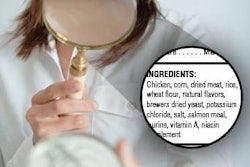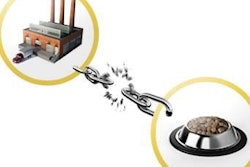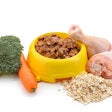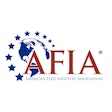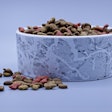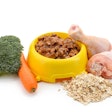From calories on petfood labels to potential changes to proof of nutritional adequacy to carbohydrate guarantees, the Association of American Feed Control Officials’ (AAFCO) annual meeting, August 3–6 in Indianapolis, Indiana, USA, included a number of petfood-related items in various stages of review and approval.
Calorie content statements . The proposal to amend AAFCO Model Pet Food Regulation PF9, which would in part require calorie content statements on all dog and cat food product labels, passed the Model Bill and Regulations Committee unscathed. Also passed was the revised Affidavit of Dog or Cat Food Calorie Content with a minor editorial revision. This latter document is intended to be submitted by companies to feed control officials, when requested, to substantiate how the declared calories were determined.
These items now go to the AAFCO board of directors with the recommendation that they be presented to the full membership for a final vote. The full vote will likely occur at the January 2013 “mid-year” meeting in Albuquerque, New Mexico, USA.
Nutritional adequacy . The AAFCO Pet Food Committee (PFC) has received final recommendations from its expert panel regarding revision of the AAFCO Dog and Cat Food Nutrient Profiles and feeding trial protocols. The committee will review and vote on the recommendations in January.
One matter of contention is the recommendation to reduce the minimums for calcium and phosphorus in food intended for large-breed puppies. The American College of Veterinary Nutrition (ACVN) previously commented that this recommendation was unwarranted and not supported by the scientific literature. The expert panel rejected that comment, but the Food and Drug Administration essentially agreed with ACVN. So, PFC will have to decide whether its acceptance of the expert panel’s recommendations will include this specific recommendation.
The proposed revisions of the AAFCO Dog and Cat Food Nutrient Profiles, particularly how they compare to the recently updated Nutritional Guidelines for Cats and Dogs that were published by FEDIAF (the European petfood industry association), will be reviewed in an upcoming column.
Carbohydrate-related guarantees . The Carbohydrate Working Group under PFC has hit a snag. A couple of years ago, regulations drafted by the Feed Labeling Committee were implemented to allow for guarantees for maximum percentages of dietary starch, sugars and fructans on livestock feed labels to support carbohydrate-related claims. This working group was intending to allow for voluntary guarantees for dietary starch and sugars on dog and cat foods labels (but not allow claims).
However, that recommendation was hampered by the fact that the laboratory methods needed to determine and verify the guarantees are still lacking. Without valid methodology in place, it is very difficult to implement regulations to provide for these guarantees.
Live animals as food . State regulation of live animals intended as food, such as mealworms, crickets, goldfish and potted grasses, has been inconsistent. At the request of the AAFCO board, a working group under the Ingredient Definitions Committee has devised a policy. Briefly, it would recommend that a label would not need to comply with state labeling (e.g., guarantees) and registration requirements unless it bore a claim for added nutrients or implied increased nutritive value.
This would be very similar to AAFCO Statement for Uniform Interpretation and Policy #27 as it applies to rawhides, bones and similar chew products. As with the chew items, a live food could still be subject to enforcement action if adulterated or misbranded, whether registered or not.
Civil penalties . A very contentious issue that arose from the Enforcement Issues Committee was the proposal to expressly include civil penalties (e.g., fines) to the arsenal of potential enforcement actions in the Model Bill. The concept is already mentioned in several places in the AAFCO Official Publication, and in fact, 18 states already have the authority to impose civil penalties. The thought, therefore, was to provide language in the Model Bill to allow for more uniform application of this action against companies.
Industry representatives, however, were very concerned. They questioned whether more powers were needed and truly would help with compliance and were worried that fines would be employed by states as a revenue enhancer or otherwise misused. Expect the matter to be revisited in January.
Other items . The board and membership accepted a statement from PFC to clarify that claims such as “AAFCO approved,” “AAFCO certified” or “AAFCO tested” were false and misleading on petfood labels unless sufficiently qualified—for example, in the context of nutritional adequacy statements. It is unclear where and how that statement will be used, however.
PFC has formed a working group to update the Labeling Guide for Pet Foods and Specialty Pet Foods, particularly to incorporate the new requirements for specialty petfood guarantees. Also, the committee may revisit Regulation PF3(b)(1) regarding the 95% naming rule and whether it should be limited to ingredients of animal origin only.




